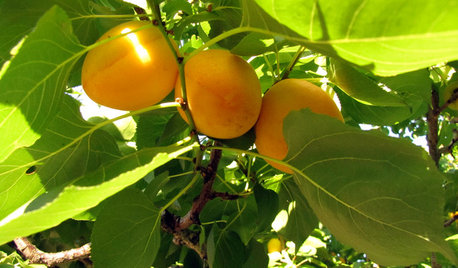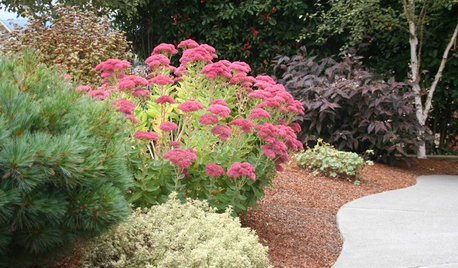thinning apples at the blossom stage
lycheeluva
15 years ago
Related Stories

EDIBLE GARDENSHow to Add an Apple Tree to Your Edible Garden
Readily available, beautiful and fragrant, apple trees offer four-season interest along with crisp, juicy fruit
Full Story
EDIBLE GARDENSWhy Grow Quince? For Beauty, Fragrance and Old-Time Flavor
Delightfully perfumed fruit and lovely spring blossoms make this apple and pear cousin worth a spot in the garden
Full Story
SELLING YOUR HOUSEHow to Stage Your Kitchen for a Home Sale
Attract buyers with a kitchen that’s clean, bright and welcoming — no expensive overhaul required
Full Story
GARDENING AND LANDSCAPINGCrazy for Fruit Trees
Whether a single citrus or a mini apple orchard, even the smallest landscape space can bear deliriously delicious fruit
Full Story
DECORATING GUIDES10 Ways to Give Your Hospitality a Tropical Touch
Treat guests to the resort treatment with blossoms, fruit and artwork that stir up an air of the exotic
Full Story
EDIBLE GARDENSHow to Grow Your Own Apricots
Velvety fruit, pretty blossoms and interesting bark make apricot trees a delight — and they’re great for smaller gardens
Full Story
EDIBLE GARDENSHow to Grow Your Own European and Asian Pears
Try these trees for their good looks, delicious fruit and wide range of sizes — plus you can espalier them
Full Story
FARM YOUR YARDIf You Have Room for Only One Fruit Tree ...
Juice up a small garden with one of these easier-care or worth-the-effort fruit trees for a mild climate
Full Story
GARDENING GUIDESPacific Northwest Gardener's August Checklist
Deadheading perennials, cutting raspberry canes and preparing for the onion harvest keeps Northwest gardeners busy in August
Full StoryMore Discussions










alan haigh
tcstoehr
Related Professionals
Garden City Landscape Architects & Landscape Designers · Zion Landscape Architects & Landscape Designers · Roxbury Crossing Landscape Architects & Landscape Designers · Allentown Landscape Contractors · Maple Valley Landscape Contractors · Burlington Landscape Contractors · Deer Park Landscape Contractors · Goodlettsville Landscape Contractors · Leicester Landscape Contractors · Lemay Landscape Contractors · Melrose Park Landscape Contractors · Overland Park Landscape Contractors · Washington Landscape Contractors · Whitehall Landscape Contractors · Merrifield Landscape Contractorsalan haigh
geraldo_linux
alan haigh
lycheeluvaOriginal Author
myk1
chuck60
alan haigh
lycheeluvaOriginal Author
glenn_russell
myk1
Karen Pease
alan haigh
myk1
alan haigh
Scott F Smith
myk1
tcstoehr
glenn_russell
alan haigh
alan haigh
bonnan
alan haigh
myk1
alan haigh
djofnelson
alan haigh
geraldo_linux
myk1
alan haigh
geraldo_linux
alan haigh
chuck60
alan haigh
swvirginiadave
estreya
geraldo_linux
myk1
estreya
alan haigh
alan haigh
myk1
alan haigh
alan haigh
myk1
alan haigh
myk1
alan haigh
myk1